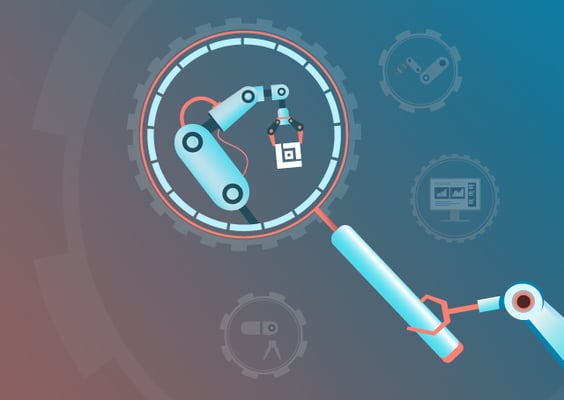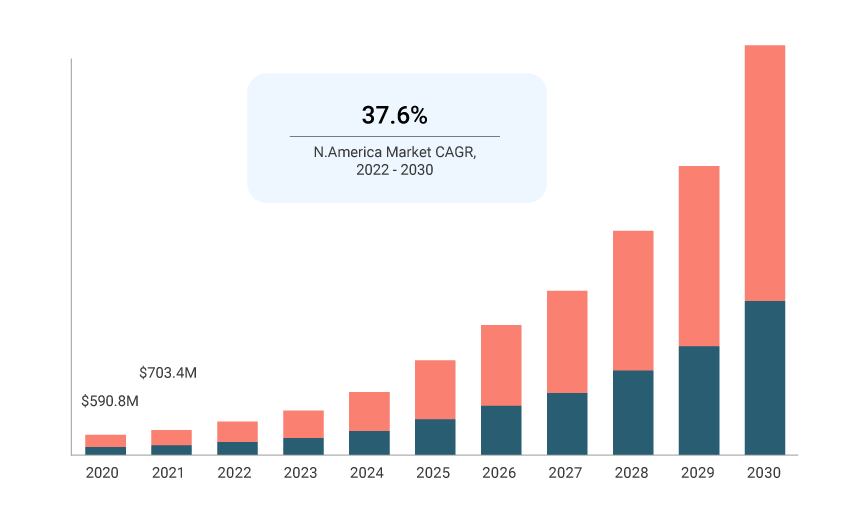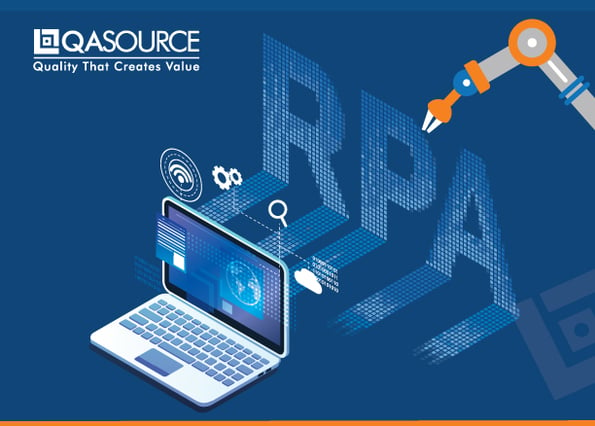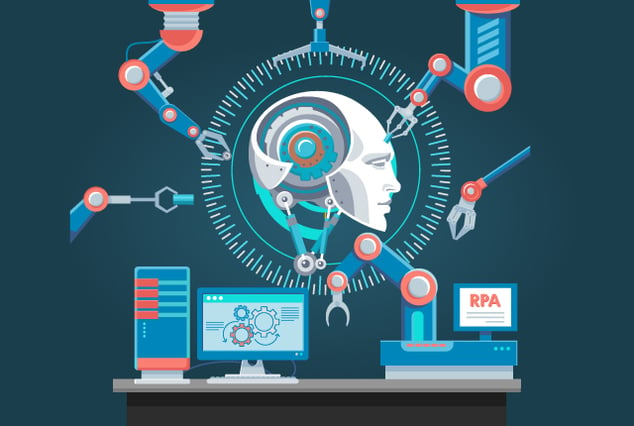
RPA or robotic process automation plays a crucial role in modern businesses by automating repetitive and time-consuming tasks. RPA software uses artificial intelligence and machine learning algorithms to simulate human actions and perform tasks that were previously completed by human workers. This technology has the potential to significantly improve efficiency, accuracy, and cost-effectiveness for businesses in a variety of industries.
By freeing up employees from routine tasks, RPA enables them to focus on more strategic and creative tasks, which can lead to improved job satisfaction and overall business performance. Additionally, RPA testing is an essential part of implementing RPA in a business setup. Testing is necessary to ensure that the RPA software is functioning correctly and meets the desired business outcomes. The primary goal of robotic process automation services is to validate that the automated processes work as expected, deliver accurate results, and do not negatively impact other systems or processes.
Companies use RPA technology in various business practices, such as credit card processing, help desk assistance, patient registration, and compliance reporting. All of these are examples of robotic process automation that have reduced cost, increased productivity, and enhanced accuracy within daily business practices.
This guide explores your biggest questions in robotic process automation, including:
- What is robotic process automation?
- What are examples of robotic process automation?
- What are robotic process automation benefits?
- What are robotic process automation challenges?
- What are the best robotic process automation tools?
What is Robotic Process Automation?
In software development, robotic process automation is the technology for configuring computer software—in other words, a “robot”—to integrate human-like actions within digital systems in order to execute a business process.
With robotic process automation tools, RPA technology captures data and executes action within the user interface, just as a real end-user interacts with an application. Robotic process automation interprets information, triggers responses, and communicates with other systems to perform an array of repetitive tasks.
It’s easy to see why everyone’s asking, “what is robotic process automation?” Not only is it listed among this year’s emerging trends in automation, but the benefits of RPA are also the reason why it’s rapidly growing in popularity, with successful examples of robotic process automation expanding across industries. For example, banking and finance organizations apply robotic process automation best practices for transactions within a short amount of time.
- Reduced Costs: Like any technology solution, RPA has upfront costs including purchasing the application, installation, upgrades, and ongoing maintenance. Many companies would argue this investment pays for itself since robotic process automation benefits can reduce operational costs by as much as 50%. Since RPA technology can work longer at a lower cost, it’s the less expensive option over human employees for repetitive tasks.
- Improved Productivity: As one of the most sought-after benefits of RPA, robotic process automation delivers almost instantly productivity. Because an RPA software robot never sleeps and doesn’t make mistakes, you can increase speed and accuracy in delivering a variety of repetitive tasks. This allows your internal team to reallocate their time and attention to client interactions and strategic initiatives that drive business growth, further improving productivity at your company.
- Enhanced Accuracy: Because RPA technology improves business processes that often suffer from human error, the accuracy drastically increases upon implementation. Beyond the robotic process automation benefits of accuracy and reliability, this technology is consistent in behavior and output quality, no matter the task at hand.
- Scalability: A group of automated workflows can be duplicated and programmed to perform similar sets of procedures, allowing companies to quickly scale with robotic process automation at a moment’s notice without increasing resources to make it happen. Companies can scale further by choosing RPA technology that also incorporates AI and machine learning into their automation processes.
- Better Reporting: What is robotic process automation without the perks of enhanced data? While there are tracking systems for monitoring human employees, RPA technology can be tracked down to the most minute task and smallest time increment. Robotic process automation can provide clear grids of activity, timelines, and accomplishments so that opportunities for further efficiency can be clearly spotted within your business processes.
- Customer Satisfaction: Consumers expect their experience with your company to move efficiently and deliver the results they want. Since RPA tech can quickly handle the repetitive tasks within the customer journey, your team can focus on providing quality communication whenever human interactions are necessary for building consumer relationships. And because the process moves at the speed your consumers expect, loyalty to your company can only increase.
RPA Market Trend
The global market for robotic process automation has been rapidly growing in recent years and is expected to continue to do so in the future. According to industry research, the RPA market was valued at approximately USD 1.89 billion in 2021 and is expected to grow at a compound annual growth rate of 38.2% from 2022 to 2030.
N. America Robotic Process Automation Market size, by type, 2020-2030 (USD Million)

Services
Software
Source: www.grandviewresearch.com
One of the primary drivers of RPA market growth is the increasing demand for RPA for test automation solutions that can help businesses improve efficiency, reduce costs, and increase accuracy. RPA is seen as a valuable investment for businesses looking to streamline their operations, reduce manual labor, and stay ahead of the competition.
In addition to its cost and efficiency benefits, RPA is also gaining popularity due to its scalability, flexibility, and ease of use. Businesses of all sizes and across various industries are adopting RPA to automate a range of tasks, from data entry and customer service to supply chain management and accounting.
Overall, the robotic process automation market is expected to continue growing in the coming years as more businesses seek to adopt automation solutions that can help them stay ahead of the competition and achieve their operational goals.
RPA Onboarding Challenges and Solutions
Every company working with RPA technology can expect to run into robotic process automation challenges along the way. After all, what is robotic process automation without growing pains?
In order to implement robotic process automation best practices, train your team to recognize these challenging situations so that proper resolutions can be implemented seamlessly within your business practices.
- Managing Employee Expectations: What your team expects from RPA technology and what robotic process automation can deliver may be drastically different if not addressed early on. Before kicking off the implementation process of RPA tools, establish the objectives and goals of implementing robotic process automation as well as define the specific process (including time and resources) for reaching those milestones.
- Defining Ownership: Out of all the robotic process automation challenges you may face, this obstacle must be resolved at the beginning of the implementation process. If it’s not clear who holds responsibility within the project—or there’s a complete lack of ownership—then RPA tech cannot live up to its potential. At your kickoff meeting, clearly define through accessible documentation the roles and responsibilities of everyone involved in the process so that nothing slips through the cracks.
- Inconsistent Outcomes: Erratic results happen when tracking mechanisms and controls are not in place. Set your processes up for future scalability by establishing tracking mechanisms and defining workflow guidelines during the implementation process.
- Lack of Infrastructure: Without infrastructure in place, robotic process automation cannot deliver desired results. Before investing in RPA tools and technology, review your current infrastructure to make sure it can easily integrate with robotic process automation and apply changes where necessary.
- RPA Maintenance: With every technology solution, upgrades and maintenance are essential for protecting the health of your business process. Neglecting robotic process automation maintenance can create defects and large-scale issues within your automated workflows. To prevent these challenges from happening, include a maintenance strategy within your RPA implementation plan and create a test automation checklist for ensuring the health of your RPA solution.
Recommended RPA Software
With your full understanding of what is robotic process automation, you are ready to see examples of robotic process automation in action. The right RPA software should be easy for your team to use, adaptable to your business practices, and accelerate results for all assigned workflows.
The best RPA tools deploy bots into applications, allowing users to build workflows for bots to follow and automate tasks. We recommend exploring these robotic process automation tools in your business processes.
- Automation Anywhere: This RPA tool is popular among businesses in finance, IT, telecom, and healthcare that are focused on automating workflows for purchasing, payments, claims to process, and HR management. Automation Anywhere features an ML-based OCR and analytical tools that can easily integrate with legacy systems. This tool enables easy deployment of basic bots and requires XML and C# for more advanced bot deployment.
- Blue Prism: Fortune 500 companies and public sector organizations commonly use Blue Prism as their intelligent automation platform. This tool allows users to design automation workflows, apply AI capabilities for creating a digital workforce, and access a control room for process assignments and high-end analytics.
- ElectroNeek: Well-respected large businesses and institutions often choose ElectroNeek as their RPA solution because of its licensure business model and easy scalability. This robotic process automation tool features a Documents Hub with drag-and-drop tools, Studio IDE for quickly building automation in a no-code environment, and Orchestrator for scheduling and monitoring all automated workflows from a central location.
- Ui Path: Considered one of the industry leaders in robotic process automation, this RPA solution rapidly expands its automation software with AI technology and machine vision tools. UI Path offers legacy application integrations and can be installed on both Windows desktops and Microsoft Azure servers for automating routine tasks.
Conclusion
In conclusion, businesses should invest in robotic process automation testing to ensure that their automation initiatives meet the desired outcomes. By carefully considering RPA onboarding challenges and effectively implementing the RPA automation testing checklist, you can ensure the health of your RPA solution. QASource, one of the leading robotic process automation solution companies, helps businesses identify areas for improvement and optimization, allowing them to continually improve the performance of their automation systems. Our team of testing experts is skilled in implementing robotic process automation solutions for software applications across industries and domains. Get a free quote today.


